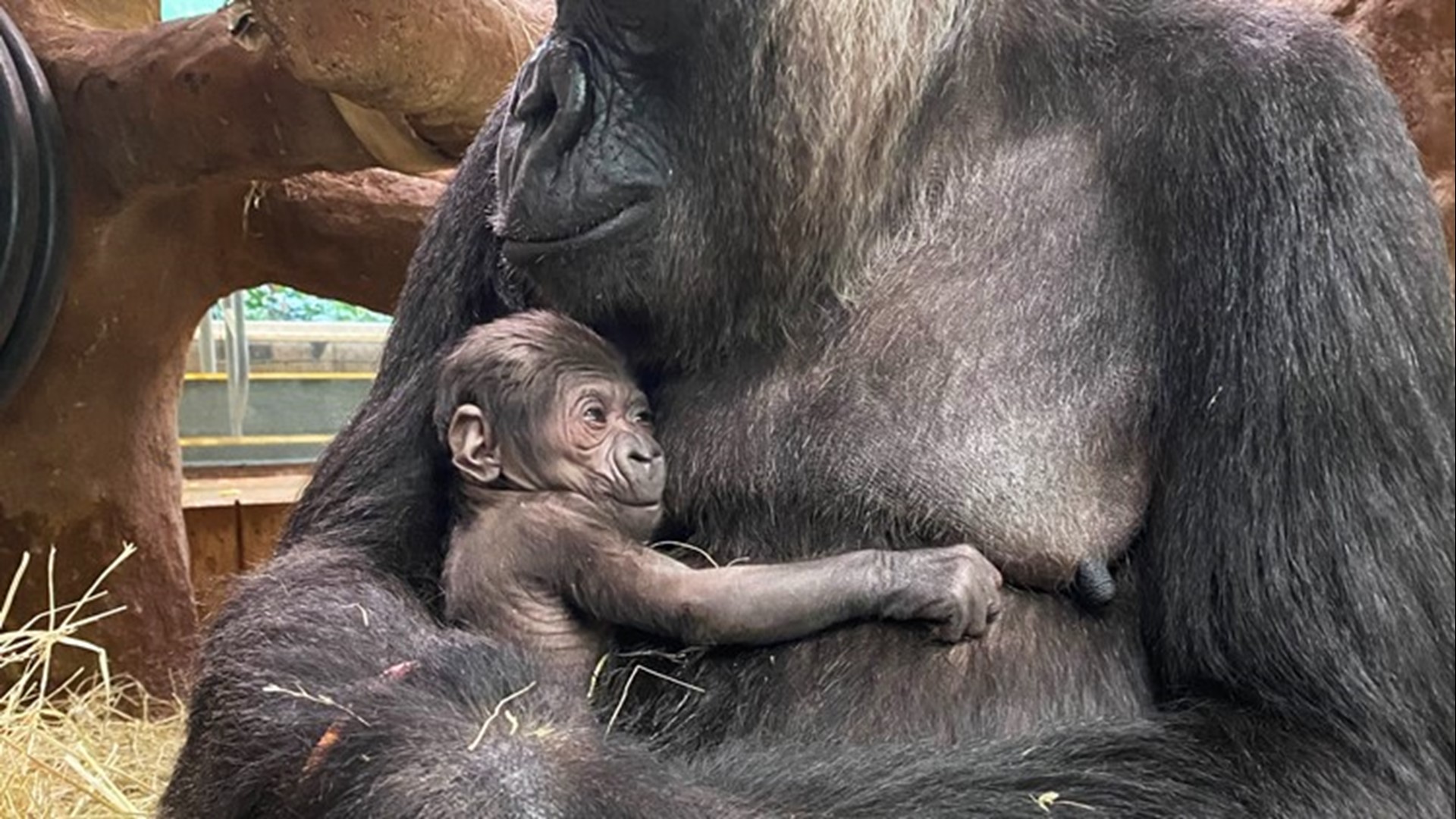WASHINGTON — Zoo staff at the Smithsonian National Zoo and Conservation Biology Institute are celebrating the birth of a western lowland gorilla. The western lowland gorilla is a critically endangered species, and this is the first born at the National Zoo in five years.
The little gorilla was born sometime between midnight and 6:15 a.m. on May 27, zoo staff estimates. It was the second offspring for 20-year-old mother Calaya and 31-year-old father Baraka.
Animal care staff at the zoo have observed Calaya nursing the infant, who has been clinging closely to its mother and they are cautiously optimistic the newborn with thrive. Zoo staff have not yet determined the newborn's sex, as they are leaving Calaya to care for, and bond with, her new baby. The Great Ape House is closed until Tuesday to allow the bonding to take place.
In October 2022, keepers used a common human pregnancy test to confirm Calaya had successfully conceived. Because they trained Calaya to participate voluntarily in ultrasounds, they have been able to monitor fetal growth and development throughout the pregnancy.


“We are overjoyed to welcome a new infant to our western lowland gorilla troop,” said Becky Malinsky, curator of primates. “Calaya is an experienced mother, and I have every confidence she will take excellent care of this baby, as she did with her first offspring, Moke. Since his birth in 2018, it’s been wonderful seeing her nurturing and playful side come out. I encourage people to visit our gorilla family and be inspired to help save this critically endangered species in the wild.”


Gorillas live in groups, called troops, that are typically composed of a silverback male, one or more blackback males, several adult females and their infant and juvenile offspring. The Zoo’s troop is composed of Calaya, Baraka, Moke and the new infant, as well as a 41-year-old female named Mandara and her 14-year-old daughter, Kibibi.


Native to Africa, western lowland gorillas live in the forests of Gabon, Central Africa Republic, Cameroon, Angola, Equatorial Guinea and Congo. The International Union for Conservation of Nature lists the western lowland gorilla as critically endangered due to habitat loss, disease and poaching. Scientists estimate that in the past 20 to 25 years, the number of wild western lowland gorillas has decreased by 60%.
The National Zoo says the public can help protect western lowland gorillas' natural habitat by making environmentally conscious decisions like recycling, especially electronics.
One of the metals inside electronic devices, tantalum, is mined from areas in the Democratic Republic of the Congo where gorillas live. Tantalum is extracted from the ore Columbite-tantalite (commonly known as coltan). Coltan excavation has resulted in gorilla habitat destruction, and many of the apes fall victim to poachers because of this practice. Recycling electronics that contain tantalum—including cell phones, computers, tablets, cameras, gaming consoles, hearing aids and GPS navigation systems—can help protect gorilla habitat by greatly reducing the demand for more expansive coltan mining.

